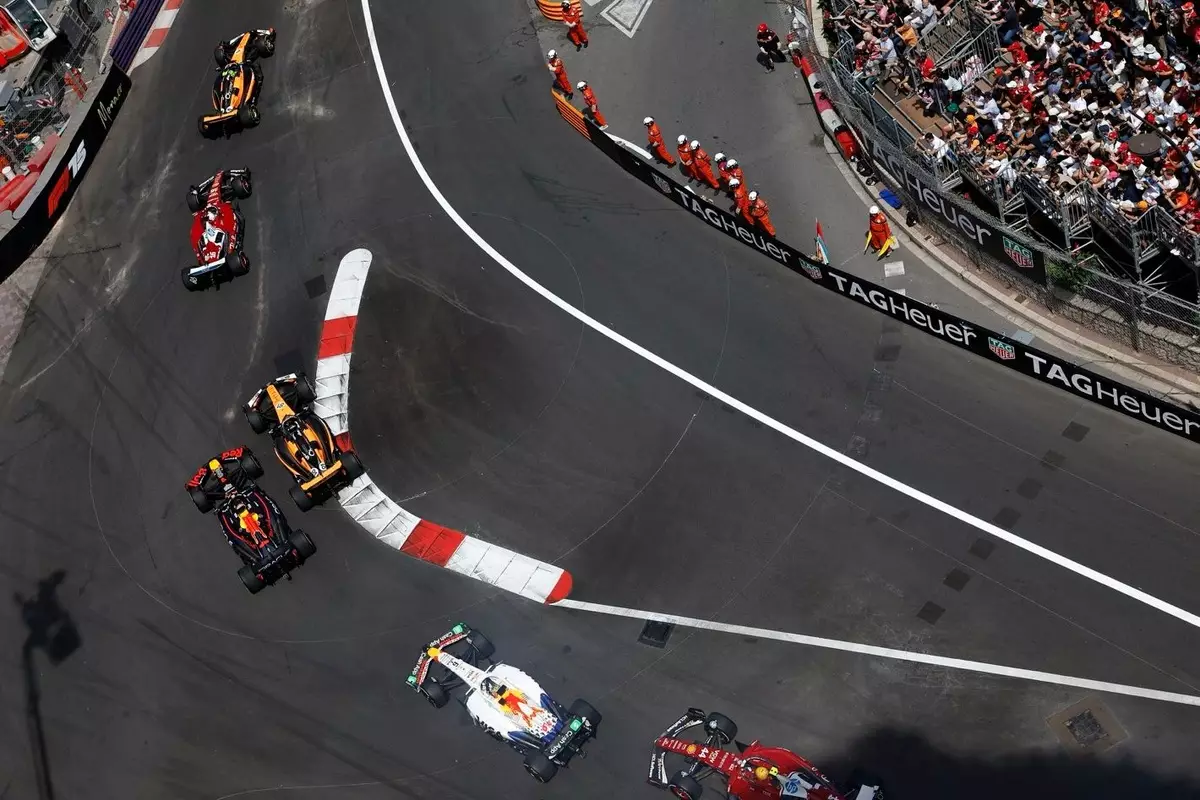Monaco’s Grand Prix has long been the crown jewel of the Formula 1 calendar. However, a modern malaise has overtaken this prestigious event, inhibiting its evolution and excitement. In recent years, the narrow streets of Monte Carlo have become synonymous with processional racing, with overtakes being more of a rarity than a rule. This frustration came to a head following the latest experiment with rules that mandated teams to use three sets of tires, aimed at fostering more strategic diversity. But did it work? The short answer is an emphatic no.
George Russell, the Mercedes driver, recently voiced his displeasure with the current state of affairs. Despite the rule changes, the result was underwhelming: drivers clung to their starting positions as strategies failed to deliver the promised excitement. It appeared that qualifying had become the most exhilarating phase of the weekend, leaving the race itself feeling like an afterthought. Russell’s bold contention that the event is effectively a glorified series of qualifying rounds cuts to the heart of the issue. What does it say when the most thrilling part of Formula 1 is the time trial, while the race spirals into a tedious affair marked by strategic slowdowns?
The Ineffectiveness of Tactical Changes
While well-intentioned, the recent tire regulation adjustments were a mere Band-Aid over a gaping wound. The idea was to enforce a two-stop strategy, theoretically ramping up intensity and intrigue. Instead, it merely amplified frustration, as top drivers, including Russell, became ensnared in the deliberate tactics of others—an issue that has been a growing concern in Monaco. For instance, as Russell battled to reclaim points after a technical glitch in qualifying, he found himself inexplicably held back by a teammate’s maneuver.
The critics have frequently pointed out that the essence of racing—the thrill of the chase—was lost on streets better suited for a leisurely drive than high-octane competition. “Driving four seconds off the pace here is dead easy,” Russell observed. This stark assessment underscores the glaring truth: the track’s capacity for excitement is waning, trading adrenaline for tedium. Even an F2 car could become a legitimate obstacle in this context, which signifies an urgent need for reconsideration of racing dynamics at Monaco.
The Case for Radical Reform
Russell’s candid admission that possibly “we need to have a real think about what the solution is here” opens the door for audacious reforms. His notion of transforming Monaco into “a qualifying race” is both provocative and intriguing. It suggests that the timeline of excitement could be split between two days, where drivers earn points not just for speed, but for prowess during qualifiers. It’s a fresh view that could redefine what it means to compete in Monaco.
Moreover, Russell’s observation about the affluence surrounding the Monaco Grand Prix is telling—one can’t help but notice the spectators sipping champagne and sunbathing rather than fixating on the tumultuous thrill of racing. The event has become as much about prestige and luxury as it is about speed. If the goal is to marry the sport with the spectacle, perhaps a radical overhaul is precisely what’s needed. The Grand Prix, as it approaches its centenary, ought to embody the spirit of competition rather than simply serving as a backdrop for elite patrons and their yachts.
Rediscovering the Thrill of Racing
To salvage the prestige of Monaco, a paradigm shift is essential. It is crucial to craft an environment where excitement takes precedence over status. Russell’s reflection on the joy of driving the iconic circuit in full gas captures what fans and drivers alike crave—unfiltered, unabated speed. The last 25 laps of the race offered him exhilarating moments, showcasing that thrills are possible, even in a seemingly stagnant race.
Monaco should be a track where passion and performances collide spectacularly. When drivers communicate their desire for more action, it’s imperative that the governing bodies listen. The current formula is clearly not working; thus, instead of sticking to minor tweaks, a complete reevaluation of the event’s structure is needed. It’s time to turn this famed Grand Prix from a monotonous procession into a thrilling showcase that draws audiences in, not just for the glamorous backdrop but for a genuine love of racing. Would such a transformation risk the tradition upon which this race was built? Perhaps, but in the chaotic world of competitive racing, it’s often essential to break away from convention to rediscover the exhilarating heart of the sport.

